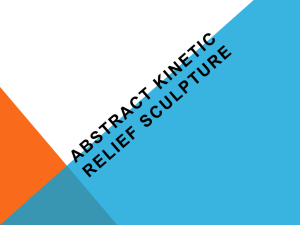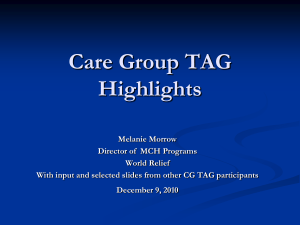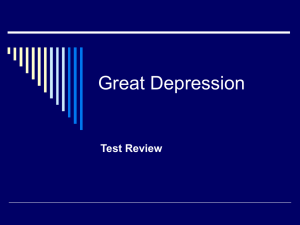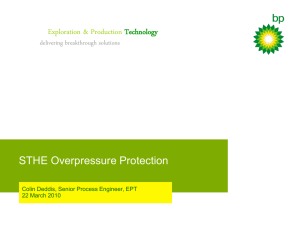Marie Baker - Lloyd`s Register Energy Blog
advertisement
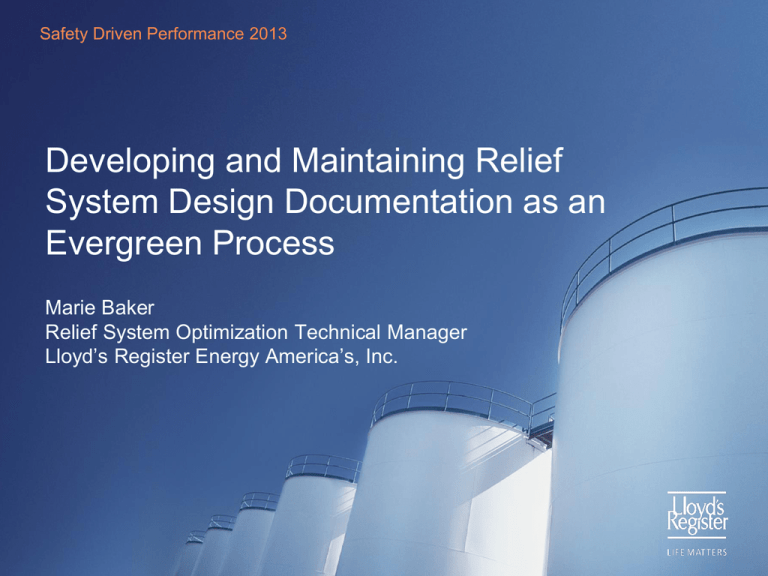
Safety Driven Performance 2013 Developing and Maintaining Relief System Design Documentation as an Evergreen Process Marie Baker Relief System Optimization Technical Manager Lloyd’s Register Energy America’s, Inc. Agenda • Overview of 29 CFR 1910.119 – How this standard applies to relief systems • Relief system design documentation methodology – Benefits of using a system based approach for relief systems • Developing an evergreen process – The importance of an evergreen process for relief systems • Optimization of relief system design documentation – Helpful hint for optimizing data 29 CFR 1910.119 – Process Safety Management of Highly Hazardous Chemicals • Intended to prevent or minimize consequences of catastrophic releases of toxic, reactive, flammable or explosive chemicals • Applies to facilities that meet the following requirements: • Process involving a chemical at or above the specified threshold quantities listed in appendix A • Process involving a flammable gas or liquid with a flashpoint below 100 °F on site in a quantity of 10,000 pounds or more 29 CFR 1910.119 – 14 Elements of Process Safety Management • • • • • • • Employee participation Process safety information Process hazard analysis Operating procedures Training Contractors Pre-startup safety reviews • • • • • Mechanical integrity Hot work permit Management of change Incident investigation Emergency planning and response • Compliance audits • Trade secrets 29 CFR 1910.119 (d) – Process Safety Information • Highly hazardous process chemical information • Physical data • Toxicity information • Process technology information • Block flow diagram/Process flow diagram (PFD) • Process chemistry • Safe upper/lower limits • Process equipment information • Process & instrumentation diagrams (P&ID) • Equipment design codes and standards • Relief system design and design basis What is Relief System Design Basis • Relief system design basis – documents how the loads and sizes of the relief system were determined • Includes but not limited to: • Overpressure scenarios • Relief load calculations • Assumptions Relief System Documentation Methodology – System based approach • System based approach is the preferred methodology • System comprised of: • Protected equipment • Interconnected piping • Relief device(s) • Relevant equipment included in documentation • • • • Pressure sources Inlet control valves Restriction orifices Locked open/closed valves Benefits of System Based Approach • All equipment is evaluated • • • • Pressure Vessels Heat Exchangers Pumps Tanks • Captures equipment without overpressure protection • Presents a total picture of the system System Based Approach - Example Relief System Documentation Methodology • Overpressure Scenario Evaluation • Includes all systems, protected and unprotected • All scenarios evaluated for each system • Rationale provided for each • For all credible overpressure scenarios • Calculations performed • Required relief load • Required orifice area • Inlet and outlet pressure drops • Any assumptions should be documented Recommended Relief System Documentation • API 521 recommended documentation • • • • • • Protected equipment information Overpressure scenario analysis Relief conditions Relief device manufacturer/model Relief load calculations Effluent location Benefits of Relief System Documentation Process • Consistent documentation • Following same standards/guidelines on all projects • All equipment is evaluated • Protected and unprotected • Information is detailed • Scenario rationales fully explained • Calculations included • Assumptions stated Benefits of Relief System Documentation Process • Current information available to the facility • Process Hazard Analysis (PHA) • Hazard and Operability (HAZOP) • Turnaround (TAR) planning • Internal and external audits Steps to Evergreen the Relief System Documentation – Step 1 • Define/develop baseline for relief system design • Revalidation • Partial or full • Recommended when documentation is scarce at a facility • Gap analysis • Based on overpressure scenarios • Based on documentation • Design verification Steps to Evergreen the Relief System Documentation – Step 2 • Develop a process for updating the relief system design basis • Who will be responsible for relief system documentation • In-house group or third party contractor • How information will get to the responsible group • How and where information will be stored • Electronically or paper copies • Central location or multiple copies spread throughout facility • When will relief systems group be brought in on projects • Who will have access to the information and to what extent Steps to Evergreen the Relief System Documentation – Step 3 • Implement the process and continually improve on it • Workflow process written in detail • Look for ways the process can be more efficient • Who is responsible for keeping up to date on new standards Optimizing Relief System Design and Documentation • Master system files stored as PDF electronically • Limits access for unauthorized changes • Provides venue for anyone needing the information • Can easily be viewed in meetings • Utilizing database software • • • • • Provides storage of data Various software available depending on facility requirements Software can provide users with different levels of accessibility Information is searchable by plant personnel Specific information can be easily extracted Any questions? Safety Driven Performance Conference 2013 For more information please contact: Marie Baker Relief System Optimization Technical Manager Lloyd’s Register Energy Americas 1330 Enclave Parkway, Suite 200 Houston, TX 77077 T E W +1 281 649 2781 mariee.baker@lr.org www.lrenergy.org


